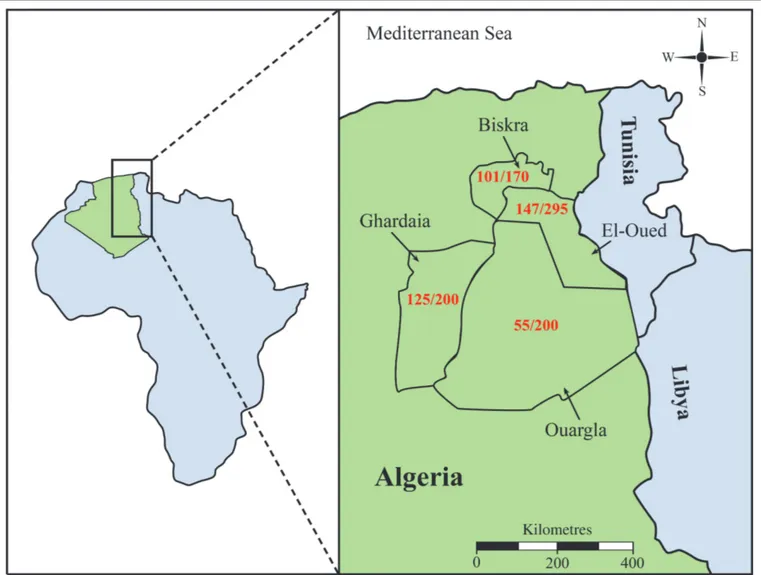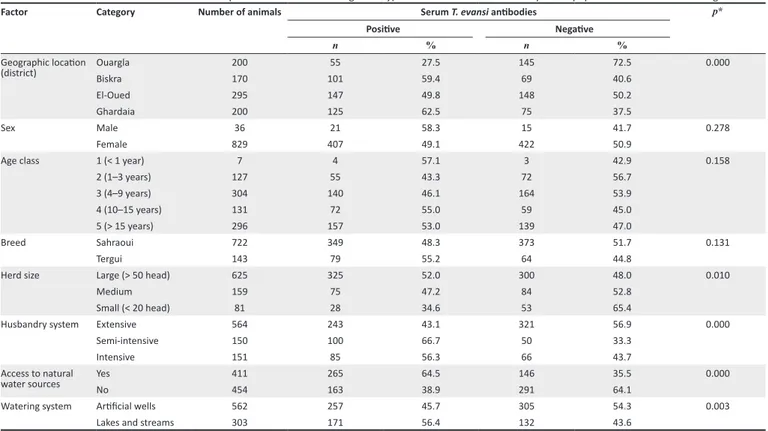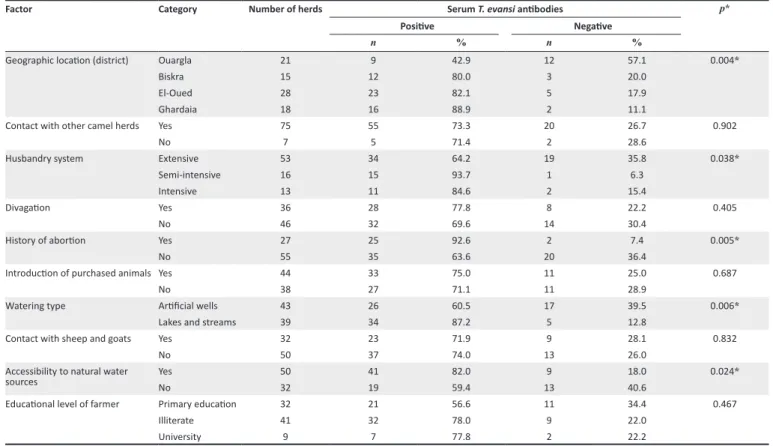Seroprevalence and risk factors for Trypanosoma evansi, the causative agent of surra, in the dromedary camel (Camelus dromedarius) population in Southeastern Algeria
Texte intégral
Figure



Documents relatifs
A cross-sectional seroprevalence study of dromedary camels was conducted in Algeria, and major risk factors associated with infection were identified by collecting data on
gondii seropositivity for the different species, the following were found to be statistically significant: age, location, climate, animal production system, rodent
muscle of camels, who reported that season significantly affected ultimate pH, with significantly higher values being reported in fall than in winter and summer.. In contrast,
(A) Protein expression (normalized by HSP90) in liver of NCD-fed WT and REDD1-KO mice (B) mRNA level in liver of NCD-fed WT and REDD1-KO mice (n=10 mice/group, relative
When the sample was cooled down to the nematic state (348 K) in the presence of a high magnetic field (3 T) the liquid crystal groups were expected to be oriented: the coercive
Si l’on se tourne vers l’Europe orientale et centrale, la droite radicale populiste s’incarne principalement dans des mouvements tels que le Parti de la Grande Roumanie (PRM),
Additional measurements of rock magnetic properties of samples of all lithologies encountered in and outside the crater show that the target sedimentary rocks and the vast majority
Thus, the divergence of head and body lice is obviously not the result of a single event, but probably takes place constantly among the two shared louse clades A and D (see below